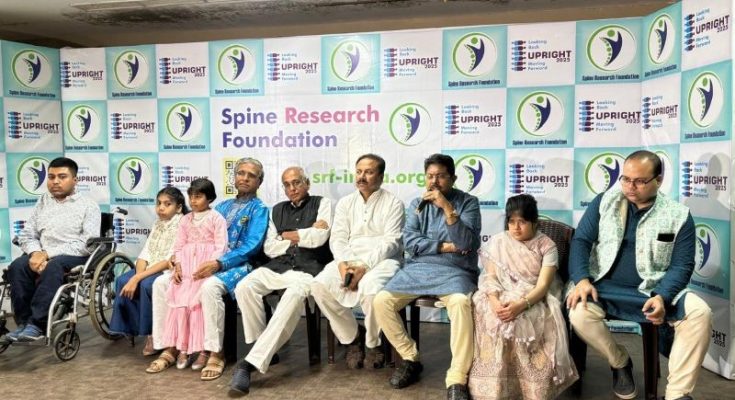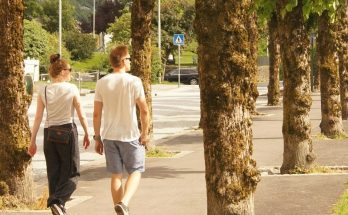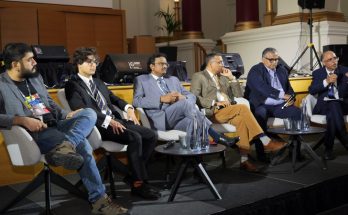#Spinal Deformities
IBNS-CMEDIA: Adolescent spinal deformities, including scoliosis, kyphosis, and lordosis, affect millions of young individuals worldwide.
These conditions, often developed during the rapid growth phases of puberty, can significantly impact physical health, self-esteem, and quality of life.
This press conference highlights the importance of early detection, education, and proactive treatment to address these challenges effectively.
The growing concern
According to recent studies, approximately 2-3% of adolescents are diagnosed with scoliosis, a lateral curvature of the spine.
While many cases are mild, severe deformities can lead to chronic pain, reduced lung function, and mobility issues.
Kyphosis, characterized by an excessive forward rounding of the upper back, and lordosis, an exaggerated inward curve of the lower back, are also prevalent but less frequently discussed.
Understanding Adolescent Idiopathic Scoliosis (AIS)
Adolescent Idiopathic Scoliosis (AIS) is a complex condition characterized by a sideways bend of the spine, often without a known cause, leading to uneven growth and potential long-term health consequences.
Symptoms include back pain, uneven shoulders, and difficulty breathing. Treatment varies from observation to bracing or surgery, usually performed between ages 12-18. Early detection and treatment can prevent complications and promote optimal spinal alignment.
AIS affects approximately 2% of children between the ages of 10 and 19, with girls being more susceptible to this condition.
Spine Research Foundation (SRF), a non-profit organization, is raising awareness about adolescent spinal deformities and the importance of early detection and treatment.
“Adolescent spinal deformities can have a profound impact on a teenager’s quality of life,” said Dr.Saumyajit Basu,Trustee SRF. “Early diagnosis and treatment can significantly improve outcomes and prevent long-term complications.”Early Detection is Key.”
Dr.Trinanjan Sarangi,Trustee SRF emphasizes the importance of routine screenings. “Early detection is crucial in managing spinal deformities,” Dr. Basu further adds “School-based screening programs and regular check-ups can help identify issues before they progress.”
Treatment Options
Advancements in medical technology and treatment methods have significantly improved outcomes for adolescents with spinal deformities.
Non-surgical interventions, such as bracing and physical therapy, are effective for many patients, especially when started early.
In severe cases, surgical procedures like spinal fusion offer long-term solutions to restore alignment and functionality.
Raising Awareness
Parents, educators, and healthcare professionals play a vital role in recognizing the signs of spinal deformities. Common indicators include:
* Uneven shoulders or hips
* A visible curve in the spine
* Rib prominence when bending forward
* Chronic back pain or discomfort
By fostering awareness and encouraging open discussions about spinal health, communities can help adolescents’ access timely care and support.
ABOUT SRF
Spine Research Foundation (SRF) is a non-profit organization dedicated to education and training in spine-related disorders and has a major role in sponsoring the surgical expenses of those patients who desperately require complicated and expensive surgeries but cannot afford them.
Over the last 15 years, SRF has been instrumental in many spinal training courses for orthopedic surgeons and neurosurgeons involved in the care of patients with spinal ailments.
A structured two-year spine fellowship program is conducted every year, and this is one of the most coveted training programs in India.
Research proposals by this organization have been repeatedly awarded by national and international societies, and quite a few have already been completed and published in peer-reviewed journals.
From a societal standpoint, SRF has been involved in more than 300 spine surgeries, the majority of them complicated and difficult spine surgeries for spinal deformities.
All the doctors involved, including the surgeons, anesthesiologists, physiotherapists, and neurophysiologists, have served these patients completely free of charge.
The hospital bills, including the OT charges and medicine bills, were sponsored by SRF, leading to a huge financial respite for the patient and their family.
Most of their patients were children who had a crooked spine, and these spinal deformities, if left untreated, can cause major respiratory problems, back pain, and occasionally lead to paralysis of the legs.
This organization has been silently functioning for fifteen years and on the same tune, we have organized a program on Sunday, February 09, 2025, to make our small efforts visible to many, to connect with our old patients, and to have a small gathering of like-minded people who will lend a hearing to our cause and may be convinced to take part in our journey.
MESSAGE FROM THE TRUSTEES
We, the trustees of SRF firmly believe that all patients with spinal ailments should get proper treatment, irrespective of caste, creed, or financial condition.
Spinal deformities, in adolescent, should be focussed upon because it is a great area of neglect and misinformation.
Evidence-based information should be available and the need for early detection is imperative to improve the outcome of treatment.





